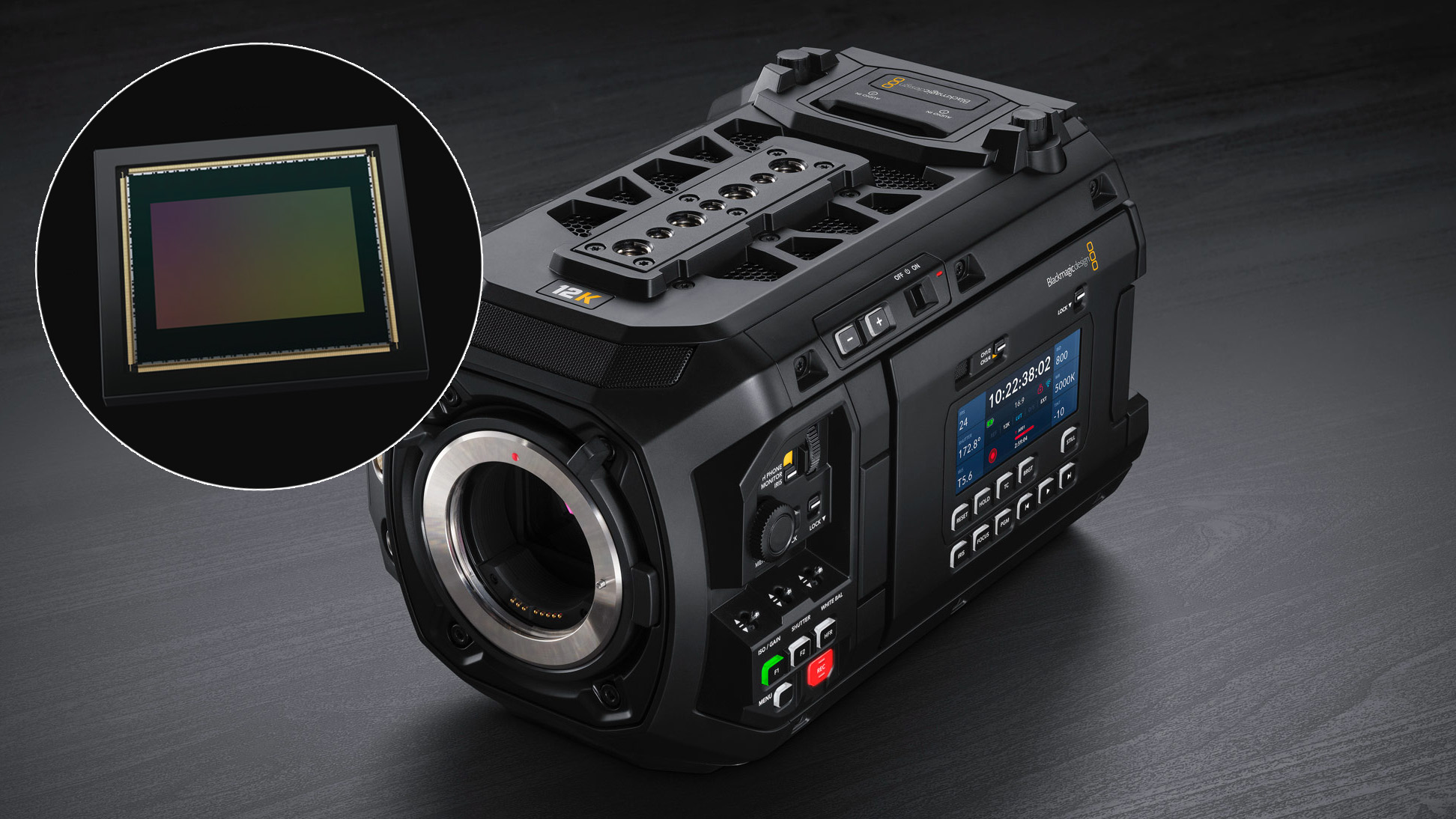
YouTube channel Team 2 Films has released a video breaking down the frankly monstrous spec of the Blackmagic Ursa Cine 12k LF. This is a proper cinema camera designed to compete with the likes of Sony, Arri and Red. But while large format film cameras are notoriously expensive, the Blackmagic Ursa Cine 12k LF starts at just $6,995 in the US. And while the camera boasts a groundbreaking bumper feature set, it’s Blackmagic’s new RGBW sensor that has really set tongues wagging.
The Blackmagic Ursa Cine 12k LF’s 12K resolution will be overkill for most filmmakers. Heck, most movie productions aren’t even shot in 8K, let alone 12K (12288 x 8040). So, groundbreaking or not, that’s a spec that’d put more filmmakers off than it would actually attract. But hold your horses.
What’s clever about Blackmagic’s latest cine camera is its ability to switch seamlessly to 8K and 4K resolutions without any of its competitors' resolution-changing caveats such as cropping into the sensor and downsampling. And it’s all down to that large-format 36x24mm RGBW sensor. See the breakdown below:
ABOVE: See the magic behind Blackmagic's new RGBW sensor
RGBW sensors are nothing new, but they require a lot more processing oomph than the traditional Bayer filter array, favored by most camera manufacturers. As Team 2 Films puts it, Bayer filters have: “twice the number of green pixels as they do red or blue. That pattern repeats on a two-by-two grid. The Ursa’s color filter array repeats on a six-by-six grid. Half the photo sites are white, the other half are an equal number of red, green and blue.”
The YouTube channel highlights how the introduction of white photo sites increases a sensor’s light-gathering capabilities, resulting in a higher dynamic range. And as we all know, higher resolutions mean smaller photosites and reduced light-gathering potential, making these white photo sites incredibly important due to the Ursa's eye-watering 12K resolution.
But the real mystery is how the Ursa is able to switch resolutions at will, with seemingly no caveats such as pixel skipping or downsampling. Team 2 Films' video explains this in a lot more detail than I ever could. Simply put, though, the camera reads pixels individually when shooting at 12K, but Blackmagic has arranged them so they can be read in groups of 2 when shot at 8K. And while the channel explains that this is essentially pixel binning, it states: “that might make it sound like sensor data is being discarded, but it’s not (...) the value of two different photo sites is being summed together before being sent onwards.”
Grouping photo sites for 8K shooting then makes it possible for the camera to shoot at 4K, but I’ll let you watch the video at 07:50 to find out precisely how. The rest of the video goes on to discuss all of the camera’s other incredibly neat features, with the team even using it to shoot real-world footage, so be sure to give it a watch!
The big question on my mind now is will other cinema camera manufacturers follow suit?
You may also like...
Into filmmaking? Check out the best cinema cameras. And if you're a Blackmagic fan, take a look at the best Blackmagic cameras. Plus, did you know that AI can turn the color palette from ANY movie into a Lightroom preset?







